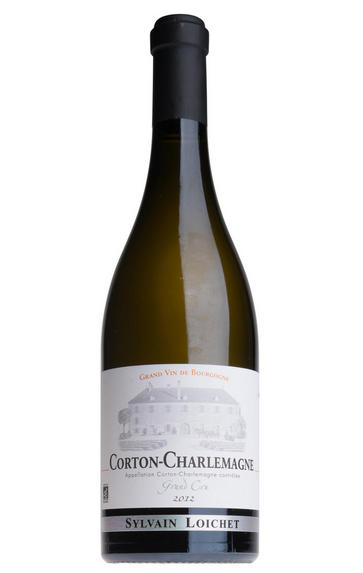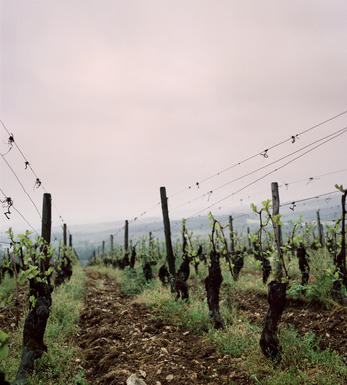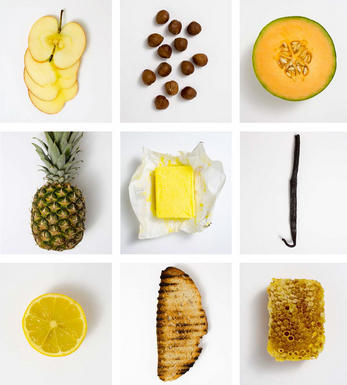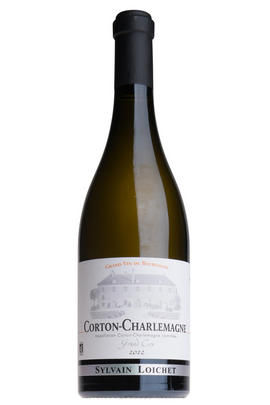
About this WINE

Sylvain Loichet
The Loichets come from Comblanchien (southern end of Cote de Nuits), as well known for its marble quarrying industry as for its vines. Indeed the previous two generations of Loichets have been stone masons rather than vignerons but they kept ownership of their vineyards (Cote de Nuits Villages, Clos de Vougeot and Ladoix blanc) which the talented Sylvain (early 20s) has taken back.
Since he does not own enough vines to make a really decent living, he has added some well chosen negociant cuvees (mostly white) which are equally impressive. The white wines are made with a great sense of precision and are full of energy. The reds are vigorous, full of fruit and look set to age very well.

Corton-Charlemagne
There are two specific Charlemagne vineyards, En Charlemagne and Le Charlemagne, making up half the Corton-Charlemagne appellation, while white grapes grown in seven other vineyards (see list below) may also be sold as Corton-Charlemagne. As a result there can be a wide divergence in style between a south-facing location such as Pougets, which needs picking right at the start of the harvest, and the western slopes in Pernand-Vergelesses which might be picked several weeks later. The underlying similarity though comes from the minerality of the soil.
En Charlemagne lies at the border with Aloxe-Corton. The hillside faces west and fine, racy white wines can be made, but the Grand Cru appellation has been extended right up to the village of Pernand itself, by which time the exposition is north-west and the valley has become noticeably more enclosed. The final sector was only promoted in 1966, and probably should not have been.
Le Charlemagne is the absolute heartland of the appellation, facing south-west, thus avoiding the risk of over-ripeness which can afflict the vines exposed due south. If I had Corton-Charlemagne vines here I would be tempted to let the world know by labelling the wine as Corton-Charlemagne, Le Charlemagne.
Two producers to my knowledge also have some Pinot Noir planted here – Follin-Arbelet and Bonneau du Martray. Both make attractive wines but neither, to my mind, justifies Grand Cru status for red wine, lacking the extra dimensions of flavour one hopes for at the highest level. This is not the producers’ fault, but a reflection of the terroir.

Chardonnay
Chardonnay is often seen as the king of white wine grapes and one of the most widely planted in the world It is suited to a wide variety of soils, though it excels in soils with a high limestone content as found in Champagne, Chablis, and the Côte D`Or.
Burgundy is Chardonnay's spiritual home and the best White Burgundies are dry, rich, honeyed wines with marvellous poise, elegance and balance. They are unquestionably the finest dry white wines in the world. Chardonnay plays a crucial role in the Champagne blend, providing structure and finesse, and is the sole grape in Blanc de Blancs.
It is quantitatively important in California and Australia, is widely planted in Chile and South Africa, and is the second most widely planted grape in New Zealand. In warm climates Chardonnay has a tendency to develop very high sugar levels during the final stages of ripening and this can occur at the expense of acidity. Late picking is a common problem and can result in blowsy and flabby wines that lack structure and definition.
Recently in the New World, we have seen a move towards more elegant, better- balanced and less oak-driven Chardonnays, and this is to be welcomed.



Buying options
Add to wishlist
Description
The Loichets come from Comblanchien (at the southern end of Côte de Nuits), as well known for its marble quarrying industry as for its vines. Indeed the previous two generations of Loichets have been stonemasons rather than vignerons but they kept ownership of their vineyards which the talented Sylvain has now taken back. Since he does not own enough vines to make a really decent living, he has added some well-chosen négociant cuvées which are equally impressive.
This year we have asked Sylvain to blend his two vineyards, Le Corton and En Charlemagne, as we found this made a more exciting and complete wine than the two components apart. The blend shows beautiful fresh fruit with a lovely touch of coconut. Fresh and attractive behind, with a very agreeable and very persistent finish.
wine at a glance
Delivery and quality guarantee